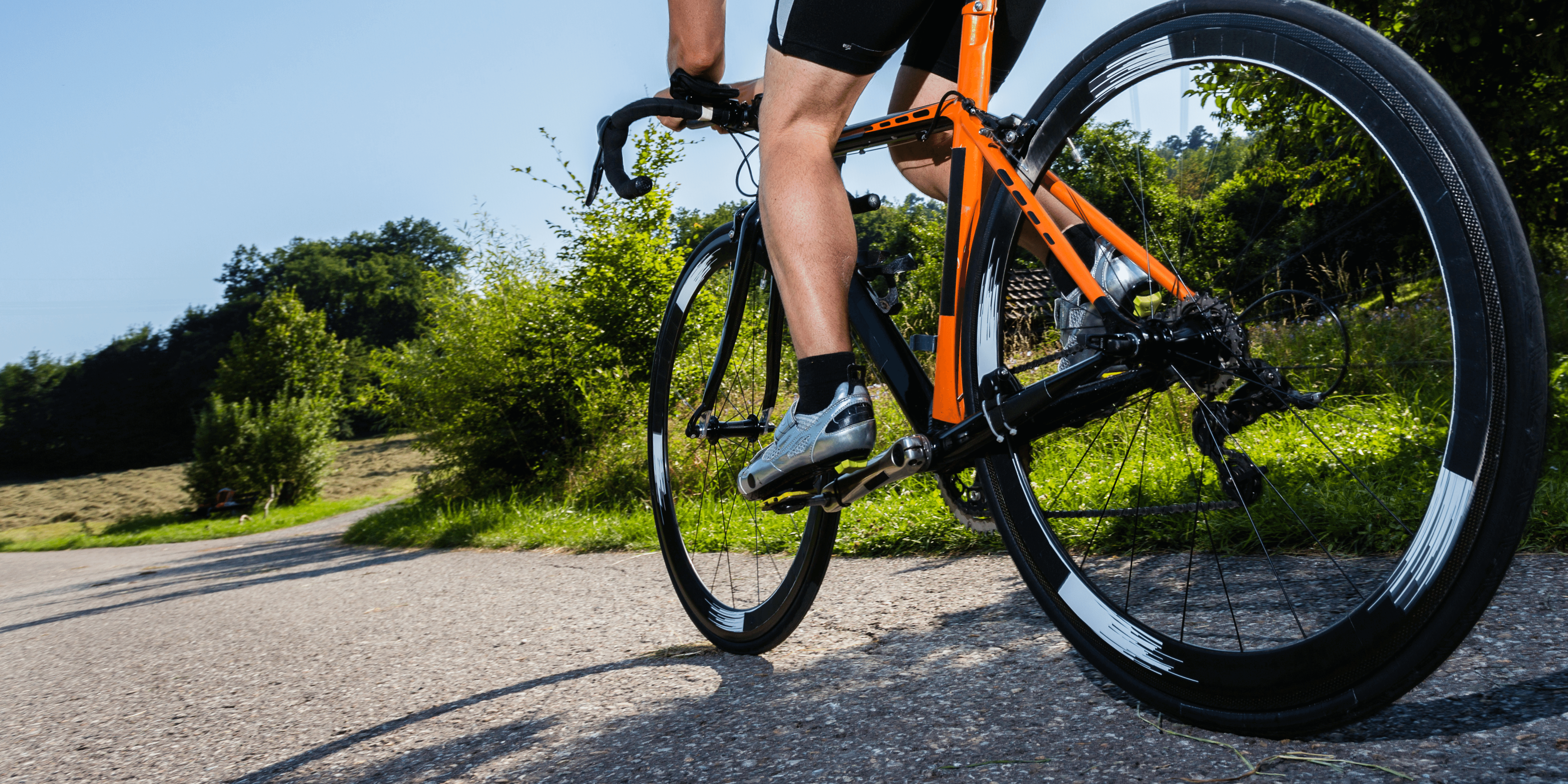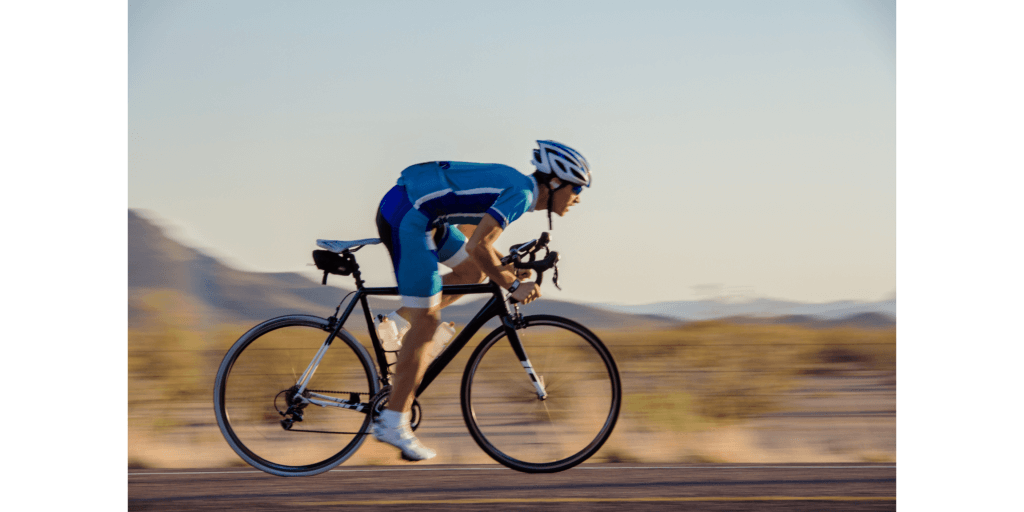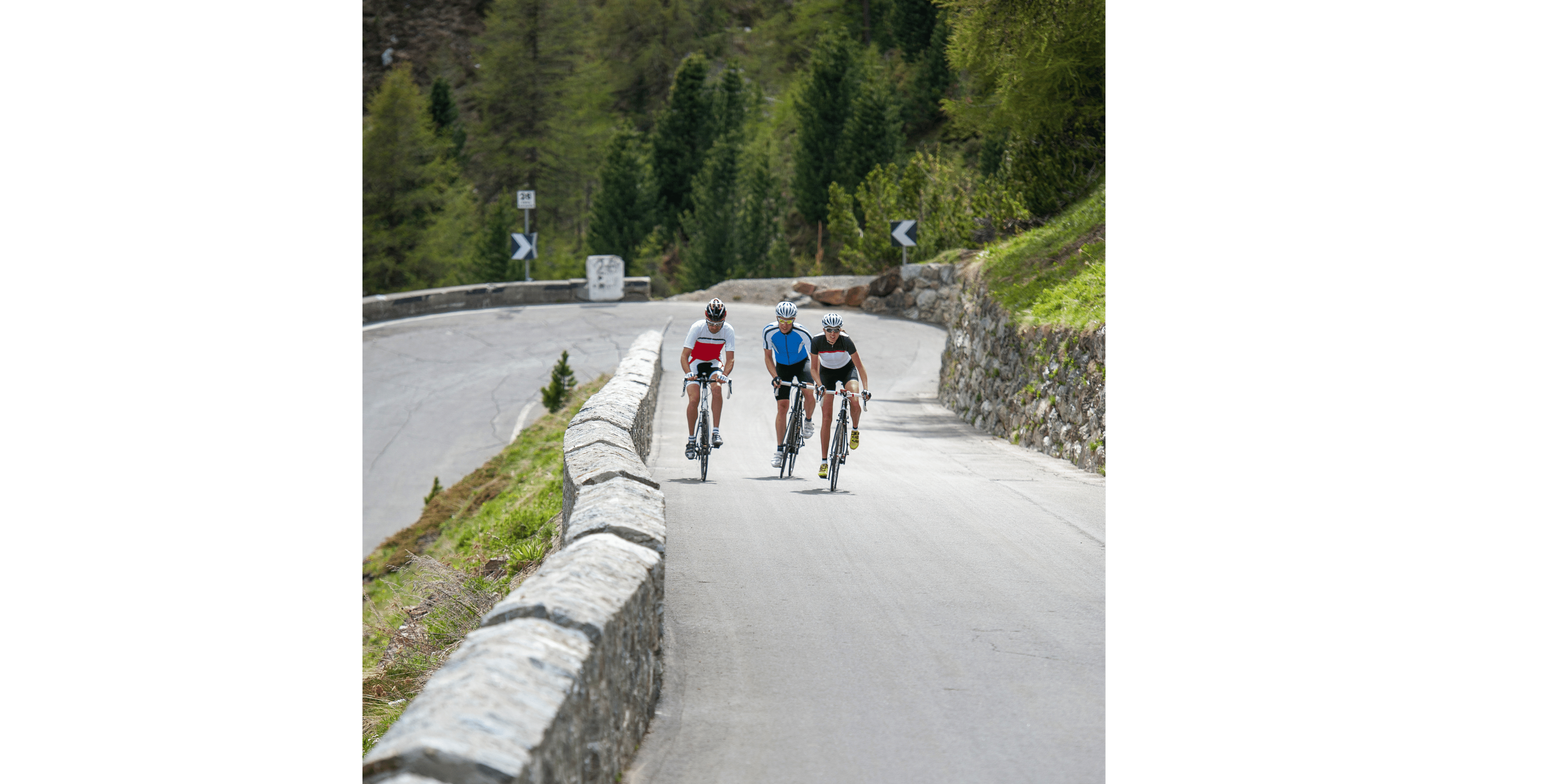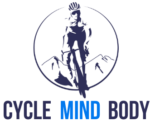Have you ever wondered how some cyclists effortlessly ride long distances with ease? The secret lies in their endurance. Endurance is a crucial component of cycling that allows you to sustain higher intensities for longer durations, push through challenging terrains, and achieve your cycling goals.
In this comprehensive guide, we will explore the best ways to enhance your cycling endurance and increase your distance on the bike. Whether you’re a beginner cyclist looking to build a solid foundation or an experienced rider aiming to conquer longer rides, this guide is for you.
Understanding the Basics of Cycling Endurance
Endurance is a fundamental aspect of cycling performance, allowing cyclists to maintain a consistent pace over long distances. To grasp the science behind endurance training, it’s essential to understand the concept of VO2 max and how it relates to cycling.
VO2 max is the maximum amount of oxygen your body can utilize during intense exercise. It is often used as a measure of aerobic fitness. By increasing your VO2 max, you can enhance your endurance capacity and ride longer distances with less fatigue.

When you engage in endurance training, several physiological adaptations occur in your body to improve your aerobic capacity and endurance. These adaptations include:
- Increased Oxygen Utilization: Endurance training improves the efficiency of your cardiovascular system, allowing your body to deliver more oxygen to your working muscles. This leads to enhanced energy production and delayed fatigue.
- Mitochondrial Biogenesis: Mitochondria are the powerhouses of your cells responsible for generating energy. Through endurance training, the number and size of mitochondria in your muscles increase, allowing for greater energy production.
- Improved Fat Utilization: Endurance training teaches your body to utilize fat as a fuel source more efficiently. This is beneficial because fat stores in the body are virtually limitless, providing a sustainable energy source during long rides.
The Backbone of Building Endurance
Endurance rides are essential in the development of the fitness required for long-distance cycling endeavors. These rides are characterized by their extended duration and steady intensity, allowing your body to adapt and build the necessary aerobic capacity. Here’s a closer look at how to structure and progress your endurance rides:
1. Distance and Duration: When it comes to endurance rides, the distance covered is a key factor. Aim to gradually increase the distance of your rides over time, pushing your body to adapt to longer durations in the saddle. Start with a comfortable distance that challenges you but doesn’t leave you overly fatigued. As your fitness improves, incrementally increase the distance by approximately 10% each week.
2. Pace and Intensity: During endurance rides, it’s crucial to maintain a moderate intensity that allows you to sustain the effort over an extended period. Aim for a pace at which you can comfortably hold a conversation without feeling overly exerted. This conversational pace indicates that you’re primarily operating in the aerobic zone, utilizing fat as a fuel source and sparing glycogen stores.
3. Gradual Progression: To build endurance effectively, it’s important to progressively challenge your body. Gradually increase the duration of your endurance rides, adding an extra 10-15 minutes each week. This gradual progression helps your body adapt to the increasing demands and prevents overexertion or excessive fatigue.
4. Time in the Saddle: Building endurance requires time spent in the saddle. Aim to accumulate a sufficient number of weekly riding hours to support your endurance development. As a general guideline, intermediate and advanced cyclists often target 8-12 hours per week for building endurance. However, beginners can start with fewer hours and gradually work their way up as their fitness improves.
5. Terrain and Variety: Varying the terrain and routes of your endurance rides can provide additional benefits. Include flat roads, rolling hills, and occasional climbs to simulate the challenges you may encounter during longer rides or races. This variation not only enhances your overall fitness but also improves your ability to adapt to different cycling conditions.
6. Monitoring Effort and Recovery: Pay attention to your perceived effort during endurance rides. While it should feel challenging, it’s important not to push yourself to the point of exhaustion. If you find it difficult to maintain a conversation or experience excessive fatigue, it may be a sign that you’re exceeding your current fitness level. Balance your hard efforts with proper recovery to allow your body to adapt and grow stronger.
Remember, consistency is key when it comes to building endurance. Regularly incorporating endurance rides into your training plan and progressively increasing their duration and distance will lay a solid foundation for improved endurance and increased cycling distance.

Structuring Your Training Sessions
To build endurance effectively, incorporate different types of workouts into your training regimen:
- Endurance Rides: Endurance rides form the backbone of building endurance. These are long, steady rides performed at a moderate intensity. Aim for a pace at which you can comfortably maintain a conversation without feeling overly exerted. Gradually increase the duration of these rides over time to push your body’s endurance limits.
Aim for 2-3 endurance rides per week. Start with shorter durations and gradually increase the frequency as your fitness level improves.
-
- Interval Training: Interval training involves alternating between periods of high-intensity efforts and recovery. This type of training is particularly effective in boosting your lactate threshold, which is the point at which lactic acid begins to accumulate in your muscles. High-intensity intervals followed by active recovery periods help improve your body’s ability to clear lactate and delay the onset of fatigue.
Aim for 1-2 interval training sessions per week. These sessions can be challenging, so allow ample time for recovery between each session.
- Tempo Rides: Tempo rides are performed at a steady, moderately hard intensity just below your lactate threshold. These rides challenge your body to sustain a higher intensity for longer durations, gradually pushing your threshold higher and improving your overall endurance.
Include 1-2 tempo or steady-state training sessions per week. These sessions should be alternated with other types of workouts to provide variety and prevent overtraining.
-
- Cross-Training: Incorporating activities like swimming, running, or strength training can provide valuable cross-training benefits. These activities help develop different muscle groups, prevent muscular imbalances, and enhance overall fitness and performance.
Include 1-2 recovery rides per week. These rides can be scheduled after more demanding workouts or as a way to balance higher-intensity training days.
Remember, these frequency guidelines can vary based on individual fitness levels, goals, and available time for training. It’s important to listen to your body, adjust the frequency as needed, and allow for proper recovery to avoid overtraining. Working with a qualified coach or trainer can provide personalized guidance and help you tailor your training plan to your specific needs.

The Mental Side of Cycling Long Distances: Overcoming Boredom and Staying Motivated
Embarking on long-distance cycling journeys not only requires physical strength but also mental fortitude. Overcoming boredom, maintaining focus, and staying motivated are essential for pushing through the mental challenges that can arise during extended rides. Here are some strategies to help you conquer the mental side of cycling long distances:
Set Goals and Break Down the Ride
Setting clear goals for your long-distance ride can provide a sense of purpose and motivation. Identify milestones along the route or set time-based targets to break down the ride into manageable segments. By focusing on reaching each milestone, you create a sense of accomplishment and progress, making the overall distance less overwhelming.
Find Your Mental Distractions
Cycling long distances can sometimes become monotonous, leading to boredom. Discovering mental distractions can help combat this. Consider the following techniques:
1. Music or Podcasts: Create a playlist or listen to podcasts that you find engaging. The rhythm of music or the captivating nature of podcasts can provide a mental diversion and keep you entertained.
2. Mindfulness and Meditation: Practice mindfulness techniques while riding to stay present and focused. Pay attention to your breath, the rhythm of your pedaling, or the beautiful scenery around you. Engaging in mindful awareness can help you stay connected to the present moment and reduce mental fatigue.
3. Mental Games: Challenge yourself with mental games or puzzles during the ride. Counting road signs, playing word association games, or calculating distances between landmarks can keep your mind actively engaged.
Visualization and Positive Self-Talk
Visualize your success and use positive self-talk to maintain motivation during challenging moments. Imagine yourself crossing the finish line or achieving your riding goals.
Remind yourself of your training efforts, your progress, and the reasons why you love cycling. Affirmations and positive self-talk can help shift your mindset from doubt or fatigue to a more empowered and determined state.
Ride with a Group or Training Partner
Cycling with others can provide a sense of camaraderie and mutual support, making long-distance rides more enjoyable. Join group rides or find a training partner who shares similar goals. The shared experience and conversation can distract from any boredom or fatigue and create a positive and motivating atmosphere.
Breaks and Rewards
Plan rest stops or breaks along your route to give yourself a mental and physical break. Use these opportunities to refuel, hydrate, and stretch. Additionally, set small rewards for yourself at significant milestones or checkpoints. It could be enjoying a favorite snack or taking a moment to appreciate the scenic views. These rewards can boost morale and help you stay motivated throughout the ride.
Embrace the Journey and Find Joy in the Process
Instead of solely focusing on the final destination, embrace the journey itself. Shift your perspective to appreciate the scenery, the physical sensations, and the freedom that cycling offers. Cultivating gratitude and finding joy in the process can help you maintain a positive mindset and keep going even when faced with challenges.
Remember, the mental side of long-distance cycling is just as important as the physical aspect. By implementing these strategies, you can overcome boredom, stay motivated, and conquer the mental hurdles that may arise during your journey.

Fueling Your Body for Endurance Rides
To optimize your endurance and sustain energy levels during long rides, fueling your body with the right nutrients is paramount. Proper nutrition plays a crucial role in enhancing your performance and allowing you to push your limits on the bike. Let’s explore effective strategies to fuel your body for endurance rides:
Pre-Ride Nutrition: Setting the Foundation
Prior to embarking on an endurance ride, it’s essential to properly fuel your body to provide a steady source of energy. Consider the following pre-ride nutrition strategies:
1. Carbohydrate Loading: In the days leading up to a long ride, gradually increase your carbohydrate intake to maximize glycogen stores in your muscles and liver. This process, known as carbohydrate loading, ensures a sufficient supply of fuel for your ride.
2. Pre-Ride Meal: Consume a balanced meal rich in carbohydrates, moderate in protein, and low in fat and fiber about 2-3 hours before your ride. This timeframe allows for proper digestion and absorption of nutrients. Include foods like whole grains, fruits, vegetables, and lean proteins to provide sustained energy.
3. Pre-Ride Snacks: If you’re unable to have a full meal before your ride, opt for a smaller snack 30-60 minutes prior. Choose easily digestible carbohydrates such as a banana, energy bar, or a piece of toast with honey.
During-Ride Nutrition: Maintaining Energy Levels
During long endurance rides, it’s crucial to replenish your energy stores and maintain optimal performance. Consider the following strategies for effective during-ride nutrition:
1. Hydration: Staying properly hydrated is essential for endurance rides. Consume fluids regularly throughout your ride, aiming for approximately 500-750 milliliters per hour. Opt for a combination of water and electrolyte-rich beverages to replace lost minerals through sweat.
2. Carbohydrate Intake: Consume easily digestible carbohydrates to provide a continuous source of energy. Energy gels, chews, and sports drinks are convenient options to replenish carbohydrates during your ride. Aim for 30-60 grams of carbohydrates per hour, depending on the intensity and duration of your ride.
3. Snack on Real Foods: Alongside sports nutrition products, incorporating real foods can provide variety and additional nutrients. Portable options such as energy bars, bananas, or sandwiches with lean proteins can offer sustained energy and satiety during longer rides.

Post-Ride Nutrition: Recovery and Repair
Proper post-ride nutrition is crucial for optimal recovery and preparing your body for future rides. Consider the following strategies to maximize recovery:
1. Carbohydrates and Proteins: Consume a balanced meal or snack within 30 minutes after your ride. This post-workout window is crucial for replenishing glycogen stores and promoting muscle repair. Aim for a combination of carbohydrates and proteins to enhance recovery.
2. Whole Foods for Nutrient Replenishment: Include nutrient-dense foods in your post-ride meal to provide essential vitamins, minerals, and antioxidants. Opt for lean proteins (chicken, fish, tofu), whole grains, fruits, vegetables, and healthy fats (avocado, nuts, seeds) to aid in muscle repair and overall recovery.
3. Hydration: Rehydrate your body by drinking fluids after your ride. Water, electrolyte drinks, or natural options like coconut water can help restore fluid balance and replenish electrolytes lost through sweat.
In conclusion, building endurance and increasing your cycling distance is a multifaceted process that requires a holistic approach. By combining structured training, proper nutrition, recovery strategies, and optimizing your equipment, you can enhance your endurance capabilities and achieve your cycling goals. Remember to progress gradually, listen to your body, and enjoy the journey of improvement.
FAQ About Cycling Endurance
How long does it take to build endurance for cycling?
Building endurance is a gradual process that varies depending on individual fitness levels and training consistency. It can take several weeks to months of consistent training to notice significant improvements in endurance.
Can I build endurance without riding long distances?
Yes, you can improve endurance without always riding long distances. Interval training, tempo rides, and structured workouts targeting specific energy systems can effectively enhance endurance. The key is to engage in activities that challenge your cardiovascular system and gradually increase the intensity and duration of your training sessions.
What should I eat before a long endurance ride?
Before a long ride, consume a meal or snack rich in carbohydrates and low in fat and fiber about 2-3 hours before your ride. This provides a steady source of energy.
Are recovery days necessary for endurance cyclists?
Yes, giving your body time to rest and repair is essential for muscle adaptation and growth. Incorporate regular rest days into your training plan to allow your body to recover, reduce the risk of overuse injuries, and prevent burnout. Use these rest days for gentle activities like stretching, foam rolling, or engaging in low-impact cross-training exercises.
How can I prevent muscle fatigue and cramps during long rides?
To prevent muscle fatigue and cramps during long rides, it’s important to pay attention to proper hydration, nutrition, and pacing. Ensure you are adequately hydrated before, during, and after your ride by drinking water or electrolyte-rich fluids. Consume a balanced diet with sufficient carbohydrates, proteins, and electrolytes to fuel your muscles and maintain optimal muscle function. Additionally, avoid pushing yourself too hard at the beginning of the ride and pace yourself appropriately to prevent excessive muscle fatigue and cramping.

